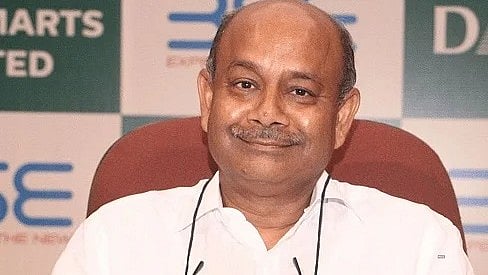The Reserve Bank of India (RBI) on Wednesday kept the benchmark interest rate unchanged at 4 per cent and decided to continue with its accommodative stance in the backdrop of concerns over the emergence of the new coronavirus variant Omicron.
Experts say:
Dinesh Khara, Chairman, State Bank of India
The RBI policy announcement addresses monetary policy and money separately, with the rate-setting divorced from calibrated liquidity management. The growth and inflation outlook look delicately poised even as the Omicron virus threat has put an element of uncertainty all around. The announcement regarding the capital infusion in overseas branches without prior approval of RBI will bring in operational and seamless flexibility. The decision to review the payment landscape and further fine-tuning UPI transfer for small value transactions could act as an enabler of mass digitization. The clarification regarding the transition from LIBOR to ARR is also a welcome move.
Dhaval Ajmera, Director of Ajmera Realty & Infra India Ltd
RBI’s announcement to continue with its accommodative stance is a welcome move to support recovery and safeguard economic fundamentals against the risks rising from any exponential outbreak of omicron variant.
RBI maintaining status quo on rates augurs well for brining equilibrium in the demand-supply economics of the real estate industry. With low loan interest rate regime, the home sales velocity witnessed across key Indian cities will continue on upward trajectory.
The revision of GDP and inflation targets are seen to be milder than expectation. The upcoming discussion paper to make the digital payments more affordable is a positive take-away from Governor’s speech. The announcements related to digital payments can offer disruption and bring dynamism in financial inclusivity expedition in the country.
IMC President, Juzar Khorakiwala
The accommodative policy stance by RBI reflects confidence that inflation projections would be in line with earlier projection. And in the backdrop of the government intervention on supply side of food products, reduction in excise duty and VAT on petroleum products, further supported by benign metal outlook, RBI rightly maintained an accommodative policy stance as continuing support to the economy. GDP is picking up but still not self-sustaining and needs policy support.
We welcome the policy stance as well as forward guidance on policy by the RBI which we believe would further spur economic activities and help bring it back to pre-pandemic level.
Suvodeep Rakshit, Senior Economist, Kotak Institutional Equities
The policy was as expected and cautious on the uncertainty due to the Omicron variant. Also, the RBI continued with the liquidity normalisation on expected lines without any explicit signal of liquidity withdrawal. The inflation estimates are also lower than what the markets are expecting.
Broadly, the policy is more dovish-than-expected possibly given the uncertainty from the new Covid variant. If the Omicron variant is benign, we expect reverse repo hike of around 20 bps possible in the February policy and tad more aggressive liquidity withdrawal.
George Alexander Muthoot, Managing Director at Muthoot Finance
We welcome RBI's decision to continue with accommodative stance as long as necessary and maintain status quo on rates, the RBI also remains committed to broaden growth impulses and preserve financial stability. I concur with RBI’s stance that while the recovery impacted by the pandemic is gaining traction, Private consumption is still below pre-COVID-19 levels, private investment is still lagging and hence the nascent growth still needs policy support.
The RBI also continues to rebalance liquidity conditions in a non-disruptive manner. While the challenges interms of managing growth-inflation dynamics, uncertainty with regards to Omicron continue, we are hopeful that the continued policy support will bode well for sectors like MSME, Agriculture and housing. We are also hopeful that pick up in Government spending and pent up demand will ensure that the market sentiment remains positive and demand revival continues to pick up pace thereby supporting demand for gold loans.
Umesh Revankar, Vice Chairman & MD, Shriram Transport Finance
The RBI on expected lines kept the key rates unchanged for the ninth consecutive time and retained accommodative stance as long as necessary. While rebalancing liquidity conditions in a non-disruptive manner, the Governor reiterated commitment to support the nascent economic recovery and preserve financial stability.
The Governor once again retained FY22 GDP growth forecast at 9.5% and stated that while the recovery is gaining traction, it is not strong enough and private investments are still lagging. Amidst the challenges with respect to inflationary pressure, global supply chain bottlenecks, high commodity prices, uncertainty caused due to Omicron, the RBI’s motto is to ensure a soft landing that is well timed. While we need to be cognisant about sticky core inflation, continued benign interest rates will be positive to support broader economy particularly SMEs, small businesses and unorganised sector.
As we look forward to 2022, the business activities have resumed pan-India, Government spending is picking up, we are hopeful that this will give fillip to urban demand conditions thereby supporting vehicle finance industry.
Dr Samantak Das, Chief Economist and Head of Research & REIS (India), JLL
Uncertainty, resilience and growth prompt status quo of policy rate
The unexpected global headwinds propelled by the new COVID-19 variant to the economic recovery prompted Reserve Bank of India to maintain the policy rates. RBI has kept the policy rate unchanged for the ninth time as it has been trying to support growth and rein inflation. Indian economy grew better than expected by posting 8.4% growth during Q2 FY22 indicating the strength of the economy.
The accommodative stance and gradual normalisation measures also signal that economy is on the firm path of growth. Indian economy has demonstrated its resilience to uncertainty in the past and it is expected deal with it more prudently in future.
The growth registered by the real estate sector in Q3 2021 is likely to continue and to end this year on a positive note. In Q3 2021, residential sales witnessed an upward trajectory, increasing by 65% on a sequential basis. This sector is expected to benefit from a regime of low mortgage rate, coupled with duty waivers, realistic property pricing and attractive offers leading to affordable synergy.
Naveen Kulkarni, Chief Investment Officer, Axis Securities
RBI remains supportive of getting the economic growth on track, continuing with a soft interest rate regime, and calibrating liquidity conditions in the system. On expected lines, the status quo was maintained on rates with an accommodative stance. Stance on inflation has been mildly tinkered with, even as markets were expecting marginally higher upward revisions.
GDP estimates at 9.5% for FY22 indicate a wait and watch policy by RBI eyeing risks emanating from the new COVID-19 variant and further demand push required to revive growth. Interest-sensitive sectors such as banks, housing will continue to be key beneficiaries. We believe that RBI prioritizing growth with an eye on inflation will keep the hardening of interest rates gradual and the upcoming Budget in February to be a key trigger for the markets.”
Rajiv Sabharwal, MD & CEO, Tata Capital
The economy has gained growth momentum over the last 6 months, however RBI will want to further nurture a broad based recovery and will also aim at sustainability of the same. There is no upward change in the reverse repo rate as contrary to market anticipations. Also, at this juncture, RBI remains guarded against any adverse impact that may arise on account of the new Omicron COVID-19 variant.
Although inflation remains a concern, moderation of crude prices and the recent cut in excise duty will work in favour for the inflation trajectory. Also, Inflation is expected to be within the comfort corridor of the RBI.
Dr M. Govinda Rao Chief Economic Adviser, Brickwork ratings
The decision to hold the policy rates by the MPC is on expected lines. On the GDP guidance, the RBI has retained the growth forecast at 9.5% for FY22, while revising the Q3 estimate lower from 6.8% to 6.2% and Q4 estimate from 6.6% to 6%. Although the RBI has lowered its GDP forecasts for H2FY22, it hopes for a 17.2% growth in Q1FY23 mainly due to the base effect.
It has sounded the caution on downside risks to growth emanating from the normalization of liquidity in the advanced economies, global supply-side bottlenecks, elevated commodity prices and resurgence of COVID-19 variants which may dampen the growth recovery.
On inflation, the RBI sees hardening of prices in Q3 FY22 but has retained the inflation forecast at 5.3% for FY22. The expectation of inflation moving within the MPC’s upper range provides scope for the continuation of the accommodative policy stance in the current fiscal. Overall, the MPC has continued with the assurance of continuation of accommodative stance to support and nurture the growth recovery. It has also indicated the continuation of liquidity normalization keeping in view the requirements of the market.
Sandeep Runwal - President, NAREDCO Maharashtra and Managing Director, Runwal Group
The RBI has always taken a proactive stance to ensure liquidity in the past few months, and has continued it's accommodative policy stance amid the renewed COVID-19 threat from the Omicron variant. It is imperative that low mortgage rates would continue, at least till the end of the year.
This will provide required fuel for the growth of the economy along with the real estate industry to which several other allied sectors are linked with. We at NAREDCO have already urged the State Government to reconsider their decision and reinstate the stamp duty reduction for another year so as to encourage home buyers and invest in their dream homes.
Churchil Bhatt, EVP Debt Investments, Kotak Mahindra Life Insurance Company
In line with expectations, MPC left Policy Rates unchanged and persisted with accommodative stance citing uncertainty around the new COVID-19 variant. Despite the upside pressures on core inflation, the MPC drew comfort from the excise duty cuts, expecting CPI inflation to peak in Q4FY22.
On liquidity management front, RBI increased the quantum of existing VRRR (variable rate reverse repo) operations in a continuing effort to nudge the overnight rates higher towards repo rate. Subsequently, we expect MPC to start hiking reverse repo gradually beginning February 2022 policy.
During this era of high uncertainty, this predictability in the path of monetary policy is of immense support to economic sentiments. Such slower than expected pace of policy normalization coupled with reduced RBI bond buying may signal a pause in recent trend of yield curve flattening. 10 Year Benchmark Gsec is expected to trade in 6.30% - 6.50% range in the near term.
Ram Raheja, Director, S Raheja Realty
The decision to maintain the same repo rate and reverse repo rate by the RBI is in line with expectations which will act as a catalyst for economic growth. The MPC meeting took place at a time when the country is coping with high inflation, despite the fact that the rate has declined from its peak in June 2021, when it was above 6%.
However, the economy grew at a record pace of 20.1 per cent in the April-June quarter compared to the same period last year, when a nationwide lockdown caused by the COVID-19 outbreak had halted almost all economic operations. The pandemic and lockdown was a silver lining for the real estate sector given it is a safe-haven and tangible asset at the time of crisis.
This led to increased investment and home-buying in the last two years. A low home loan interest rate regime has been greatly instrumental in further stimulating India’s real estate sector, especially during the festive season. The sentiment for the real estate sector therefore remains positive and the same is also reflected in the S&P BSE realty index as it continues upward movement.
Pradeep Multani, President, PHD Chamber of Commerce and Industry
RBI’s accommodative policy stance to keep repo rate unchanged will support the anticipated growth trajectory and continue to mitigate the impact of COVID-19 on trade and industry.
The accommodative policy stance at this juncture would not only pave the way for a double digit GDP growth in the current year 2021-22, but will also help in creating a strong, sustainable and vibrant economy going forward.
Abheek Barua, Chief Economist, HDFC Bank
The RBI policy announcement was on expected lines as the central bank continued to support growth and sounded caution on the omicron risk. The central bank kept its stance, policy rate and corridor unchanged and did little to provide any forward guidance on the path of future policy rate increases. The RBI kept its inflation forecast unchanged at 5.3% for FY22, signalling that it believes inflation to be more transient than permanent in nature.
We expect inflation prints to surprise on the upside and average at 5.6% for FY22, driven by elevated input and fuel costs and as the base effect wanes off. On liquidity normalisation, the RBI continued its auction based rate management policy, moving away from the reverse repo – so far the effective overnight rate – towards the repo rate through liquidity rebalancing from the overnight to the VRRR (variable rate reverse repo) window. We expect this to put further upward pressure on the short-end of the curve
Lakshmi Iyer, CIO – Debt & Head – Products, Kotak Mahindra Asset Management Company
In what seemed like a close call, the RBI MPC chose to maintain status quo on key benchmark rates. No material changes to growth and inflation forecasts too. This suggests RBIs caution on the recent developments on the pandemic front. While 14 day VRRR amount has been increased in a graded manner, there seems to be no sense of urgency on RBI’s part to initiate any abrupt liquidity drain out measures. Bond markets should draw comfort from this decision and continue to trade range bound. Global cues to dominate the rate moves going forward.
Shishir Baijal, Chairman & Managing Director, Knight Frank India
We welcome the decision of the MPC on maintaining status quo on the key policy rates as well as continuing its accommodative stance that has so far helped the Indian economy to beat the gloomy shadows of COVID – 19. Most high frequency indicators have bounced back to pre-COVID-19 levels; however, some slack in the economy remains. The low interest regime and adequate liquidity into the system is critical to further strengthen the domestic market.
Even while RBI has announced measures to further mop up excess liquidity, it has also convinced that adequate liquidity will be maintained as required. We hope, the monetary policy announced today will help maintain the economic growth momentum even in the wake of the new variant Omicron.
The low interest rate regime has been instrumental in reviving the real estate sector in the last 6 quarters through their systematic approach. RBI’s efforts, along with other demand stimulant measures, have helped revive demand that had been languishing for close to 7 years prior to 2020. The continuance of the accommodative stance will help further the cause for the sector.
Ramesh Nair, CEO-India, and Managing Director, Market Development, Asia, Colliers
On expected lines, RBI has kept repo rates unchanged at 4% for the 9th consecutive time. This accommodative stance will aid demand dynamics and propel economic growth to mitigate the impact of Covid-19. This will support RBI’s vision of GDP growth of 9.5% for the year. At the same time, the growth will also hinge upon the new variant of covid-19 and its impact. The unchanged repo rate will continue to improve sentiments in the real estate sector. The housing sector is already seeing a revival in sales, led by low home loan rates, pent-up demand, and stable prices.
Anuj Puri, Chairman - ANAROCK Group
With Omicron throwing a shadow of doubt across the world and in India, the RBI has decided to keep the repo rates unchanged at 4% and reverse repo rate at 3.35%. This was expected, and is the ninth consecutive time that the RBI maintained status quo amid current uncertainties.
The unchanged repo rates will help maintain status quo on the prevailing low interest rate regime for some more time. This works well for all home loan borrowers as the environment of affordability will continue.
Amit Goyal, CEO, India Sotheby's International Realty
We welcome RBI's status quo on policy rates. This means that the home loan interest rate will remain at the current level of sub 7% per annum. Besides that, the Governor rightly said in his statement that recent reduction in excise duty and state VAT on petrol and diesel will support consumption demand by increasing purchasing power. We expect demand in the housing market to improve further.
All eyes are now on the upcoming budget. It will boost the real estate sector if the government enhances deductions against home loans in Budget 2022.
Suren Goel, Partner, RPS Group
RBI decision to maintain status quo on the interest rate means home loan rates will continue to remain at a record low level. This augurs well for the housing sector and the real estate sector as a whole. With reasonable prices, lower interest rates and sufficient option to choose from, this is perhaps the best time to buy a dream home and we are hopeful of witnessing an uptick in demand.
Pradeep Misra, MD, New Modern Buildwell Private Ltd, a real estate company having projects in Varanasi and Allahabad
The lower home loan interest rates would help the real estate sector, particularly in tier 2 & 3 cities. As interest rate along with house pricing is one of the biggest influencers of individuals' buying decisions, we expect reasonable demand for housing over the next few months.
Dhaval Ajmera, Director of Ajmera Realty & Infra India
RBI maintaining status quo on rates augurs well for brining equilibrium in the demand-supply economics of the real estate industry. With low loan interest rate regime, the home sales velocity witnessed across key Indian cities will continue on upward trajectory. The stock markets are expected to remain buoyant and realty index will continue to advance with positive bias in the short to medium term.
The revision of GDP and inflation targets are seen to be milder than expectation. The upcoming discussion paper to make the digital payments more affordable is a positive take-away from Governor’s speech. The announcements related to digital payments can offer disruption and bring dynamism in financial inclusivity expedition in the country.
D.R.E Reddy, CEO and Managing Partner, CRCL LLP
It is a welcome move to keep key interest rates unchanged, reiterating an accommodative stance on both rates and liquidity. Food inflation is still a matter of concern, even as fuel inflation has risen, and CPI inflation and fuel inflation, has remained elevated. Continued policy support is a good stance for growth. The Indian economy has recovered from its greatest slump; we are now better prepared to deal with the upcoming Omicron variant.
Jyoti Prakash Gadia, Managing Director, Resurgent India Limited
Reposing faith in the visible growth impulses and control on projected inflation, a status quo on the policy rates has been maintained by RBI on expected lines.
Simultaneously, the continuation of accommodative stance also bodes well for the emergence of a vibrant economy, out of the sustained revival path. This will, however, require the additional capital expenditure in the desired sectors, besides the steps already initiated on boosting demand and removing supply-side constraints.
On the liquidity front also, RBI has indicated a calibrated approach, with an additional amount of Rs 1.50lac crore for 14 days VRRR, and allowing prepayment of TLTRO aiming at a rebalancing of liquidity in a phased manner. Overall a hand holding policy for growth with a hawkish eye on inflation.
Abhay Agarwal, Founder, Piper Serica, SEBI Regd. PMS
RBI has maintained its policy of ‘first do no harm’, kept its stance accommodative and kept its liquidity management options open. This policy stance has been clearly communicated by RBI and should be lauded. It has largely maintained the near-term GDP growth rate and inflation estimates with some minor changes.
With a fall in crude prices, the worry about a sharp spike in core inflation has abated. This has allowed RBI to not only maintain the repo rate but also the reverse repo rate. There was a worry that RBI will sharply normalize the reverse repo rate to 3.75% over the next 2-3 months. This worry has been reduced now.
Clearly, RBIs focus is on making sure that the nascent post-COVID-19 recovery is resilient and not just short-lived. So, it is quite sensibly pursuing flexible inflation targeting to ensure a ‘soft-landing’ rather than a hard one. At the same time, it has started to suck out excess liquidity that was infused in the system after the first wave and has kept the options open to do one-time OMOs and operation twists.
Ashish Sarangi, RIA and CSO of Pickright Technologies, Smart Investment Platform
The much-awaited RBI Monetary policy is out and we welcome this move by MPC on maintaining the interest rate flat. This will further boost the auto sector mainly targeting 4 wheelers and CVS. This is currently the hot market as we are seeing many innovations and new players entering the space.
Let’s see how this will play out in different sectors, Housing sector which is currently reeling under mild depression will see a boost as investors will take advantage of low-interest rates and start investing. So, we see an upward move in the stocks of the housing sector in the near long term.
Sonam Srivastava, Founder at Wright Research, SEBI RIA
In line with the market expectations, the RBI has kept an accommodative stance on growth by not changing the repo rate and reverse repo rate. The RBI governor also gave a commentary that supported recovery and stood cautious on inflation expectations. While in line with other global markets that have started reducing liquidity to fight inflation, RBI could have increased the reverse repo rate as some economists expected.
The RBI has kept a focus on keeping growths up with the new omicron virus being a threat and also been optimistic on inflation expectations as the crude prices have eased up and seasonal correction of prices is expected. The governor also said that the RBI would keep the proactive measures of liquidity absorption open as it has been doing through the VRRR auction and introduce a prepayment option for banks, which is again very prudent from the inflation control point of view.
The markets will meet this policy with a cheer as it is very accommodating to growth, and the country’s inflation expectation analysis remains very positive.
Aditi Nayar, Chief Economist, ICRA
Today's policy review maintained a complete status quo on the repo and reverse repo rates and the monetary policy stance, in line with our expectations, necessitated by the renewed uncertainty fuelled by the Omicron variant.
While a subtle shift has been brought in with the comment that price stability remains the cardinal principle of monetary policy, the overarching tone of today's statement and forward guidance is less hawkish than what we had anticipated.
The comment on managing a durable, strong, as well as inclusive recovery, underscores concerns of a K-shaped trend underpinning the traction in economic growth.
Rohit Poddar, Managing Director, Poddar Housing and Development Ltd
The RBI’s decision to maintain the repo rate unchanged at 4%, point towards the road to economic recovery. An overall economic activity progressing towards retained inflation is good news and showcases that the overall economic activity in the country has evolved.
While the rise in commodity prices has put upward pressure on input material costs, the economy's low interest rate has been a major contributor to the housing sector's recovery. When the real estate industry was just getting back on its feet, it was slammed by the new variant. The new COVID-19 variant Omicron has again pushed the global and Indian economy into a state of uncertainty and nervousness.
In order to encourage consumption and investment in the real estate sector, consistent demand stimulant measures and favorable financing conditions would be required. Compare to last year, we are in a much better place owing to the proactive measures taken by the government which is resulting in achieving stability in the economic fundamentals of the country.”
Dr. Arun Singh, Global Chief Economist, Dun & Bradstreet
We maintain our view that the Reserve Bank of India (RBI) is likely to change its accommodative stance from second half of 2022 when growth gathers a firmer ground and there is some clarity on the future movement of inflation. On the inflation front, while supply chain shocks are adding to the inflationary pressures, demand side pressures are currently firming up. There will be a pass-through of elevated commodity price at the factory gate level and eventually into core inflation; the pass through will depend on strengthening of demand. Both urban and rural demand are currently on a rise.
On the growth side, the new variant is lending uncertainty to return to normalcy. Risk from global spillovers to growth remain high as inequality of vaccination across countries remains high. The current domestic growth momentum is largely driven by demand and private sector investment should pick up to make it more sustainable.
Sastri - Chairman & MD, Sterling Developers Pvt. Ltd.
The RBI’s decision on keeping the repo rate unchanged will certainly bode well for all interest-sensitive sectors ahead of the New Year when the economy is on its road to recovery. For home buyers, this decision will help reinstate confidence and further access to affordable home loans and help foster housing demand.
It has also helped the sector to regain its strength as well as stay afloat during these unprecedented times. The homebuyers should take advantage of the current situation because there are chances that the prices might go upwards later on account of reducing supply and the pressure of increased costs of raw materials. There has been a fundamental change in buyers’ expectations and attitude towards homeownership, which has already resulted in the residential real estate sector perform exceedingly well across all segments in the post COVID-19 era.
We are also seeing a lot of first-time home buyers, who were not able to reach a decision earlier are eager to conclude the deal now. Real estate is definitely an asset class that one must remain invested in today and in the long term and looking ahead, we do believe that markets will see sustained growth. With economic recovery on a positive note, growth needs to be carefully nurtured. This can be done by giving a fillip to the economy by incentivizing real estate. With improved GDP growth estimated in the near future, we expect that the real estate sector will contribute a substantial share to overall economic development.
Indranil Pan, Chief Economist – YES Bank
Monetary policy remains on expected lines, even with respect to the reverse repo rate. RBI paints a relatively docile picture on inflation for now whilst it wants to ‘assiduously’ nurture growth to make it ‘self-sustaining’. Immediate risks to growth as seen from the Omicron is one specific factor that allows RBI to stay on a status-quo for now. RBI keeps the door ajar, but would probably be more patient on inflation being slightly on the higher side than growth on the faltering side.
The turn in the investment cycle will be crucial, that unfortunately is yet to happen. Furthermore, RBI would want to factor in the fiscal policy of February within the scope of adjustments under the monetary policy. If fiscal policy is relatively tighter for next year, then monetary policy might have to continue to remain accommodative.
We believe that RBI will attempt to close the LAF (Liquidity adjustment facility) corridor in February if the understanding on the growth-inflation dynamics turns favourable towards growth. Any changes to the Repo rate are still way off and into FY23. Taking a call immediately may be difficult unless there is a clarity on the new variant and the hurt it can inflict on the economy in the near term.
Vikash Khandelwal, CEO, Eqaro Guarantees
The RBI has maintained continuity in its accommodative stance by keeping the key rates unchanged. While India has emerged as the fastest-growing major economy the RBI’s decision today will further support growth and hasten the economy’s return to normalcy. The central bank has been pushing for a stable policy regime as the economy recovers in aftermath of the pandemic.
A phased unwinding of liquidity, stable energy prices, and the manner in which the government navigates through the pandemic will be key to growth in FY22 & FY23









